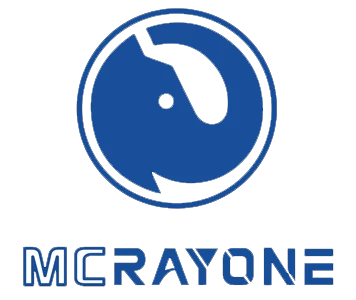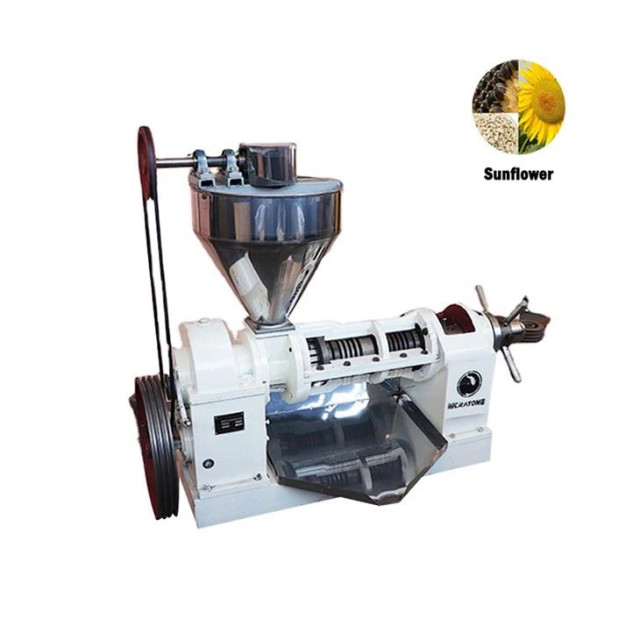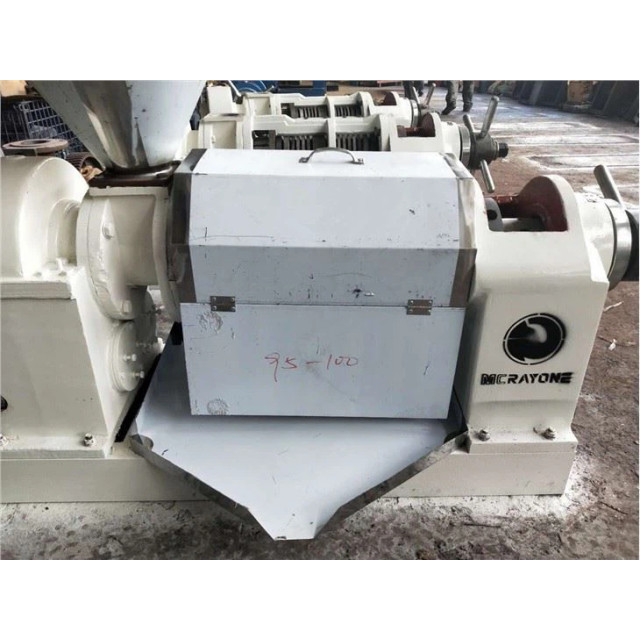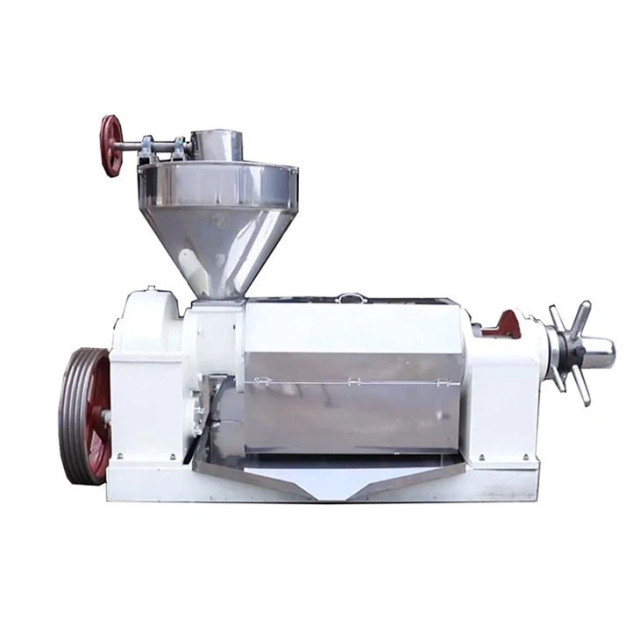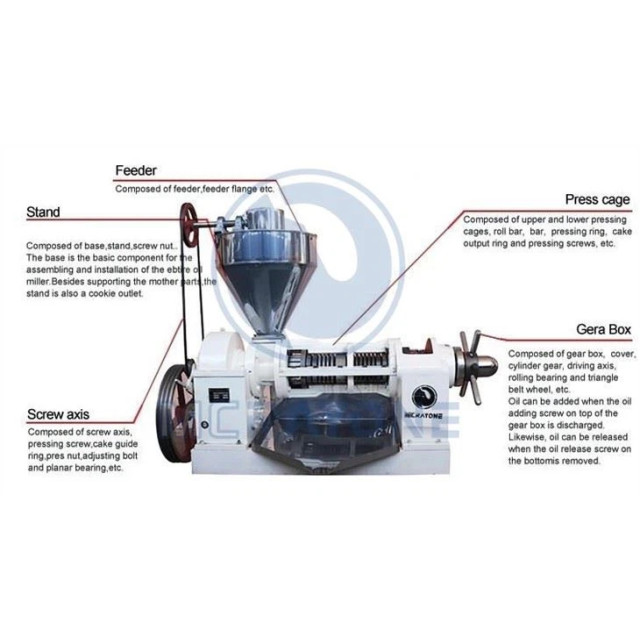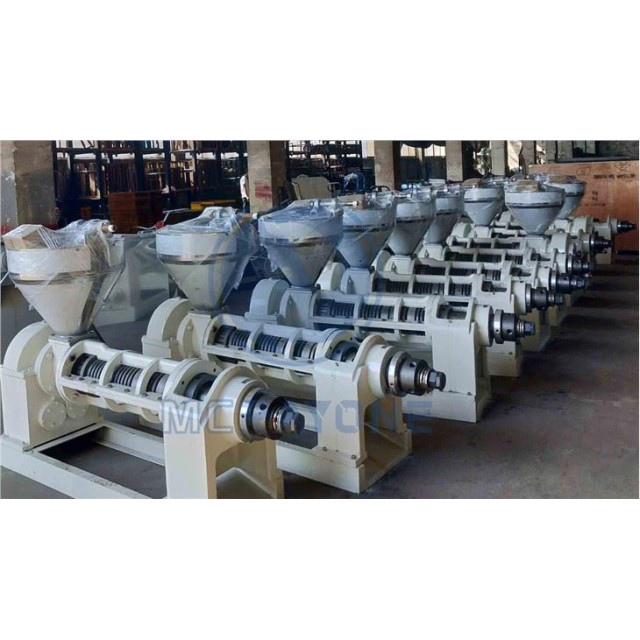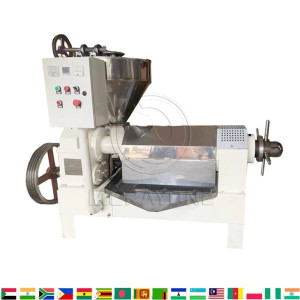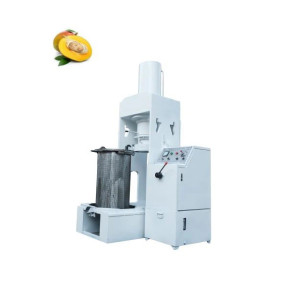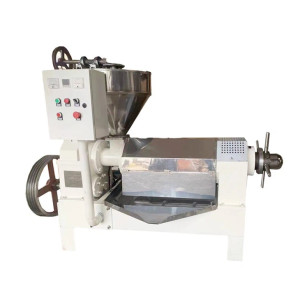Screw Oil Press Machine
When the oil press is running, the processed oil enters the press chamber from the hopper. The material embryo is continuously pushed inward by the pressing screw for pressing. Since the material embryo is in motion in the pressing chamber of the oil press, under the condition of high pressure in the pressing chamber, a great frictional resistance is generated between the material embryo and the screw press, the material embryo and the pressing chamber. It can cause friction between the micro-materials of the blank and cause relative movement.
On the other hand, since the diameter of the root circle of the screw press is gradually thickened and the pitch is gradually reduced, when the screw press rotates, the thread can push forward and turn outward, and at the same time close to the screw thread. The material layer on the surface also rotates with the press shaft. In this way, each material embryo particle in the press chamber does not move at the same speed and in the same direction, but there is also a relative motion between the particles.
-
Screw Oil Press Machine Details
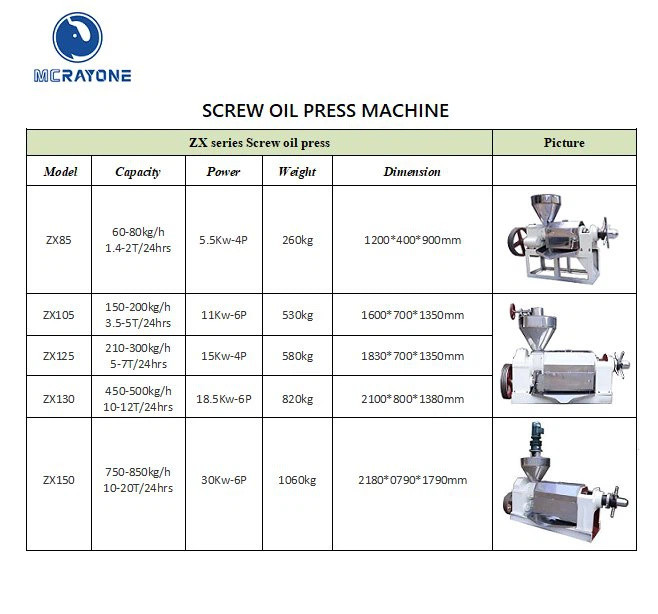
The difference between single-phase electricity and three-phase electricity
1. Definition of single-phase, three-phase
Single-phase, is the general household electricity. The phase line is represented by L (which is what we call the live wire, and the neon bulb will light up when measured with an electric pen), and the zero line is represented by N (under normal circumstances, the electric pen measurement does not light up). The voltage between the two is 220V.
Three-phase is more used in industry (such as 3-phase motors), and household air conditioners also have 3 phases. The difference between single-phase electricity and three-phase electricity.
Generally, A, B, C (or L1, L2, L3) are represented by yellow, green and red respectively. No matter which line has electricity, any two voltages between the three are 380V.
Any two of them form two-phase electricity (more for electric welding machines). Any one of the three phases and the neutral line are combined, and then supply power to the home separately.
2. Differences and advantages of three-phase electricity and single-phase electricity
Three-phase electricity is 380V, and single-phase electricity is 220V for civil use. In simple terms, three-phase four-wire (if it is a neutral wire) in industrial electricity can be used for civil use.
A power supply composed of three AC potentials with the same frequency, the same amplitude, and a phase difference of 120 electrical degrees from each other is called a three-phase AC power supply. Electrician world
The single-phase alternating current used in daily life is actually provided by one phase of the three-phase alternating current, and the single-phase alternating current power generated by the single-phase generator is now rarely used.
Three-phase alternating current has many advantages over single-phase alternating current. It has obvious advantages in power generation, transmission and distribution, and conversion of electrical energy into mechanical energy. The difference between single-phase electricity and three-phase electricity
For example, the manufacture of three-phase generators and transformers saves materials compared with the manufacture of single-phase generators and transformers with the same capacity, and has a simple structure and excellent performance.
For another example, the capacity of a three-phase motor made of the same material is 50% larger than that of a single-phase motor. Under the condition of transmitting the same power, the three-phase transmission line can save 25% of non-ferrous metals compared with the single-phase transmission line, and the power loss is It is less than that of single-phase transmission.
Because of the above-mentioned advantages of three-phase alternating current, it has been widely used.
3. The difference between three-phase power supply and single-phase power supply
The power generated by the generator is all three-phase, and each phase of the three-phase power supply and its neutral point can form a single-phase loop to provide users with power energy.
Note that the AC loop cannot be called positive or negative, but should be called the line terminal (called the live wire in civil electricity) and the neutral wire (called the neutral wire in civil electricity).
4. The difference between single-phase and three-phase
The so-called single-phase electricity refers to one-phase live wire (of course there is also one-phase neutral wire), and the voltage between the live wire and the neutral wire is 220V;
The so-called three-phase electricity refers to the three-phase live wire, the voltage between the adjacent live wires is 380V, and there is no neutral wire.
Therefore, three-phase electricity can be applied only when the three-phase loads are the same (for example, a three-phase motor). At this time, since the current vector sum of the three-phase electricity is 0 (the three-phase electricity forms an angle of 120 degrees with each other, so the and 0) the neutral line (equivalent to the zero line) is not required at this time.
Our oil presses are all 3-phase, because the single-phase motor will cause insufficient power and the machine cannot run normally. If you can only use single-phase electricity, you can apply for 3-phase electricity, or use a diesel engine or diesel generator.
